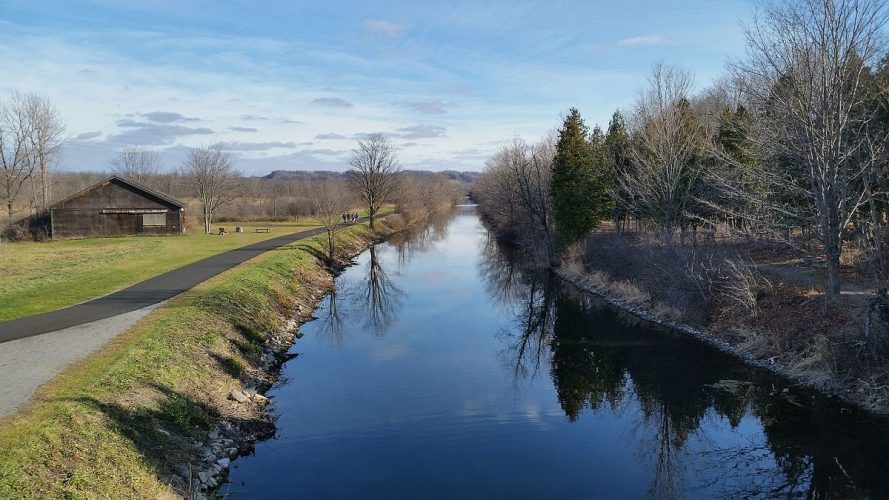A Most Unusual Monument
David Freund, Chief Leadership Officer

In a time when there were no civil engineers in the United States, James Geddes and Benjamin Write set out to plot the route. They were judges by profession, and while that would help with settling property disputes, it wouldn’t help much with construction. It is said that Geddes had only used his surveying instruments for a few hours before setting out on the project. A project that would stretch 363 miles and connect the Hudson River near Albany to the Niagara River near Buffalo. It made so much sense; just connect the Great Lakes to the Eastern Seaboard with a simple waterway—The Erie Canal. But wait, the elevation of Lake Erie is 600 feet above that of the Hudson River, and locks of that era could only rise 12 feet. The canal would need 50 locks, would need to be 40 feet wide and four feet deep, and required a towpath on each side. Viaducts would be needed to carry the canal over ravines. Aqueducts would be needed to maintain water levels, and one aqueduct would need to be 950 feet in length—more than three football fields. The sides of the canal would be lined with cut stone, so hundreds of German stonemasons were needed. I can’t even begin to do justice to all the obstacles they faced, from naysayers, political opposition, and the lack of machinery and skilled labor.
DeWitt Clinton had a vision, and he had a compelling reason that the Erie Canal should be built—and built it was. The first canal boat hit the water in May 1821, and the canal was fully operational by October of 1825, spreading prosperity and opportunity across the empire state. The canal was faster than moving over land and cut transportation costs through the state by 95%. Clinton unleashed on this project the American Spirit. A spirit that burns within us to accomplish meaningful things. Things that make the lives of those around us better. We are so blessed to have parts of this amazing canal in our community. Whenever you see it, realize that you see a monument to the American Spirit, and that Spirit still lives within each of us and is just waiting to be unleashed.
If you would like to hear more details about this amazing canal, please join Marisa Norcross and me for Episode 191 of The Next Page podcast.
Download The Next Page Here: iTunes | Google Play | PodBean